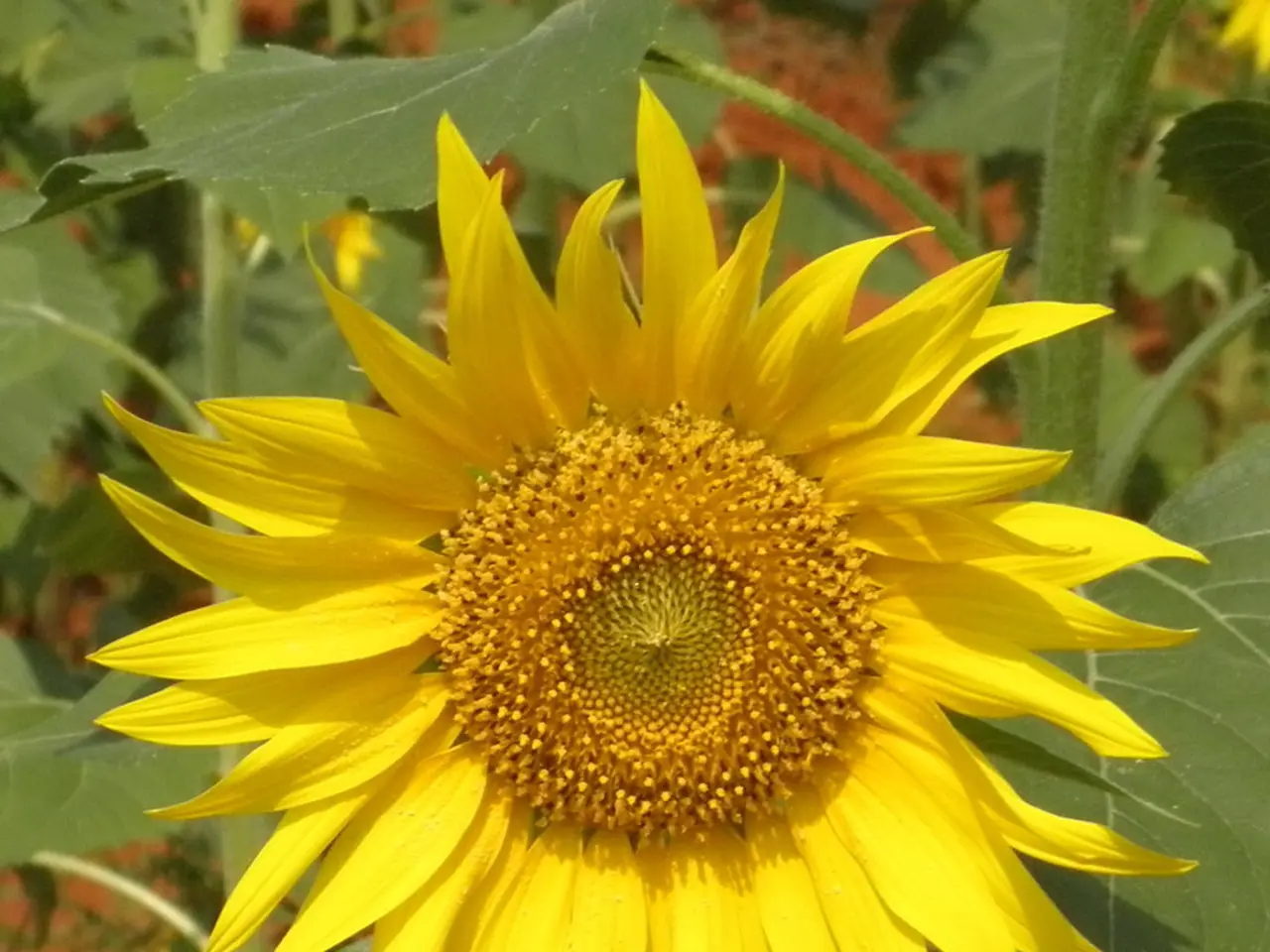Mastering the Art of Gathering and Preserving Wildflower Seeds Efficiently
In an effort to preserve and enrich local ecosystems, gardening enthusiasts can collect and replant wildflower seeds. Here's a step-by-step guide to help you gather, dry, store, and utilise wildflower seeds for a sustainable garden.
Collecting Seeds
To harvest seeds, wait until the seed heads are dry and mature but have not yet dispersed naturally. This usually occurs during late summer to early fall, depending on the species. Use a paper bag, envelope, or container to collect seeds without crushing them. Be sure to label seeds clearly with the plant species, variety if known, and the date of collection to track viability.
Drying Seeds
After collection, spread seeds out in a single layer on trays, screens, or coffee filters in a cool, dry, and well-ventilated place away from direct sunlight. Seeds are fully dry when they snap or shatter easily; if they bend or squish, they need more drying time. Drying seeds promptly after harvesting prevents mold and premature germination.
Storing Seeds
Store fully dried seeds in paper envelopes or zip-lock bags, placed in a cool, dark, and dry location like a closet, drawer, or basement. For some species, store seeds in sealed containers in the refrigerator to prolong viability. Avoid storing seeds in areas with high heat or humidity. Seed viability varies; most wildflower seeds last 3-5 years when properly stored, but it's safest to use them the next planting season.
Supporting Local Ecosystem
Prefer collecting seeds from native wildflowers adapted to your area to support biodiversity and local pollinators. Share surplus seeds with local seed libraries or community gardens to encourage wider native plant growth and ecosystem stability.
By carefully collecting mature wildflower seeds, drying them thoroughly, labeling, and storing in cool, dry places (or refrigerated when necessary), you can maintain seed viability for several years. Using native seeds helps foster resilient, sustainable local ecosystems and enriches your garden’s biodiversity.
Additional Tips
- Wildflowers help enrich the soil with natural nutrients that are often stripped during gardening.
- Label the containers with important details like the plant species, collection date, and location.
- Before planting, test a small batch of seeds by planting them indoors to make sure that they're still viable.
- Store the containers in a cool, dark, and dry location to keep the seeds viable for several years.
- Some seeds may require stratification (cold treatment) or scarification (scratching the surface) before planting to improve germination rates.
- Research the specific needs and growing conditions of each wildflower species before collecting seeds.
- Store dried wildflower seeds in airtight containers to protect them from moisture, light, and pests.
- Check on the stored seeds occasionally for signs of moisture, mold, or pest damage.
- Make sure that you aren't violating any laws or regulations if gathering seeds from protected areas.
- Choose healthy plants for seed collection, looking for ones with vigorous growth and prolific blooming during the growing season. This helps ensure that the seeds you are collecting are from a good genetic stock.
- When collecting wildflower seeds, use scissors or pruning shears, gloves, small paper bags or envelopes, and labels. Avoid plastic bags as they can trap moisture and damage seeds.
- Dry the collected wildflower seeds completely before storing to prevent mold or rot.
- Growing native wildflowers in your garden can help reduce your reliance on store-bought seeds and help create a more sustainable gardening practice.
- Wildflowers support local ecosystems by providing food and habitats for pollinators like bees, butterflies, and birds.
- Gardening enthusiasts can gather seeds from native wildflowers, which are adapted to their area, to support biodiversity and local pollinators.
- To maintain seed viability for several years, dry the collected wildflower seeds thoroughly, label and store them in cool, dark, and dry locations (or refrigerated when necessary).
- By growing native wildflowers in your garden, you can help enrich the soil with natural nutrients, reduce reliance on store-bought seeds, and create a more sustainable gardening practice.
- Wildflowers support local ecosystems by providing food and habitats for pollinators like bees, butterflies, and birds.
- Before planting, test a small batch of seeds by planting them indoors to make sure they're still viable, and research the specific needs and growing conditions of each wildflower species.




